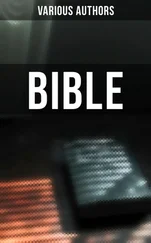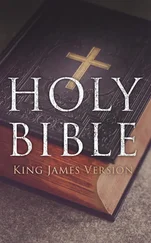R. Aqiba said: "They differ in both."
What does R. Aqiba teach us hereby? Is it not the same as the teaching of the first Tana? The difference between them is as stated by R. A'hli, according to another version R. Yekhiel, viz.: An entry of less than four spans need have nothing. But they did not specify who was of R. A'hli's opinion and who was not.
We have learned in a Boraitha: R. Aqiba said: "R. Ishmael never made such a statement, but the disciple said this upon his own authority and the Halakha prevails according to the disciple." Is this not a contradictory assertion? First, he says, that R. Ishmael could not have made such a statement, i.e. , that the Halakha is not so, and then that the Halakha prevails according to the disciple? Said R. Jehudah in the name of Samuel: "R. Aqiba said this only in order to encourage his disciples, that they may pronounce decrees upon their own authority." R. Na'hman bar Itz'hak said: "R. Aqiba really said that R. Ishmael made no such statement, but the decree of the disciple was correct and should stand."
It was taught: R. Jehoshua ben Levi said: "In every case, where it is stated that a disciple said in the name of R. Ishmael before R. Aqiba, that disciple is R. Meir, who was a disciple of both R. Ishmael and R. Aqiba."
R. A'ha bar Hanina said: It is known to Him, Who said one word and the world was created, that in the generation of R. Meir there was not one who was his equal; but why do not the Halakhas prevail according to his decisions? Because his colleagues could never arrive at the conclusion of his decrees. If he decided that a thing which was unclean was clean, he proved it to them by a reason, and vice versa . We have learned in a Boraitha, that his name was not Meir but Neherai. Why was he called Meir? Because he enlightened 1the eyes of his colleagues in Halakhas. Where the name R. Neherai is mentioned, it refers to R. Nehemiah or to R. Eliezer ben Arach. Why do they call them Neherai? Because they clarified the vision of their colleagues in the Law.
Rabbi (according to some it was Rabh) said: Why am I more sagacious than my colleagues? Because I once saw the back of R. Meir, and if I could look upon his face I would be more sagacious still, as it is written [Isaiah xxx. 20]: "But thy eyes shall see thy teachers."
Said R. Abbahu in the name of R. Johanan: "R. Meir had one disciple, and his name was Symniachos, who could give forty-eight reasons for the uncleanness of unclean things and the same number of reasons for the cleanness of clean things."
Said R. Abba in the name of Samuel: Three years the school of Shammai and the school of Hillel disputed. One school said that the Halakhas prevail according to their opinion, and the other claimed that their decrees should stand. Finally a heavenly voice was heard to the effect that both schools disputed as to the words of the living God, but the Halakhas prevail according to the school of Hillel.
Now if it be true that both schools dispute as to the words of the living God, why should the school of Hillel be thus favored? Because the members of the school of Hillel were modest and patient, and would always repeat the words of the school of Shammai. Not alone this; but they also always gave the school of Shammai precedence when citing their teachings, as we have learned (in Tract Sukkah): Said Beth Hillel to Beth Shammai: "Did it not happen, that the eldest of the school of Shammai and of the school of Hillel went together to visit R. Johanan the son of Hachoranis, etc. (whence we see that the eldest of the school of Shammai were given precedence over those of the school of Hillel)." Thence thou canst learn, that everyone who maketh himself humble is raised up by the Holy One, blessed be He, and one who is arrogant is humbled by the Holy One, blessed be He. He who pursueth greatness, the greatness escapeth him, and he who avoideth greatness is sought by greatness. He who forceth time ( i.e. , he who perforce would become rich though fortune be against him), time oppresseth him, while he, who awaiteth his time, is assisted by time.
The Rabbis taught: Two years and a half Beth Shammai and Beth Hillel disputed amongst themselves. One school declared, it were better that man had not been created as he was, while the other declared it was better that man had been created as he was, than not to be created at all. Finally they came to the conclusion, that it were better had man not been created, but since that had happened, a man should always examine his actions, and according to another version, a man should always consider the deeds he is about to perform.
MISHNA: The cross-beam in question must be wide enough to hold a half of a brick, three spans in length and in width. It is, however, sufficient, if the cross-beam be only one span wide, so as to hold the half of a brick lengthwise. The crossbeam must be wide enough to hold a half of a brick and sound enough to bear it. R. Jehudah saith: It must be wide enough, even if it be not sound enough.
If the cross-beam be of straw or reed, it is (legally) regarded as if it were of metal; if it be crooked, it is (legally) regarded as straight; if it be cylindrical, it is (legally) regarded as square. Anything (measuring) three spans in circumference, is one hand width.
GEMARA: Why does the Mishna say, that it is sufficient if the cross-beam be only one span wide; it should be one and a half, which is the width of a half brick? Because if the crossbeam be one span wide the other half span which it should measure, can be added by the addition of a little loam on each side.
Said Rabba bar R. Huna: The cross-beam alone must be sound enough to bear a half brick, but the supports upon which it rests need not be sound enough to bear both the cross-beam and the half brick ( i.e. , if the cross-beam was put up on sticks, the sticks need not be sound enough to support both the crossbeam and a half brick; for the cross-beam being the sign of the entry, it is only essential that it be sound enough to support a half brick, although in reality it never serves the purpose, while the sticks are not part of the sign and need not be put to such a test). R. Hisda, however, states, that the cross-beam must be sound enough to bear half a brick, and its supports must be sound enough to bear both the cross-beam and the half brick.
R. Shesheth said: If one put up a cross-beam over an entry, and hung a mat upon it, and this mat was distant from the ground three spans or more, it is considered, that there is neither a cross-beam nor a partition at the entry; no cross-beam, because it is covered up, and no partition, because goats can go through it.
The Rabbis taught: If a cross-beam was put up over an entry, but did not reach the opposite wall, or if two cross-beams were put opposite each other, but did not meet, should the distance between the cross-beam and the wall in the first instance, or between the two cross-beams in the second instance, be three spans or over, another cross-beam must be erected. If it be less than three spans no other cross-beam is necessary. R. Simeon ben Gamaliel, however, said, "If the distance be less than four spans, another cross-beam is not necessary, but if it be four spans or more, another cross-beam must be erected."
The same is the case with two cross-beams that were laid parallel, neither one of which was sound enough to bear a half brick: If both together measured one span in width, which is sufficient to bear a half brick, another cross-beam is not necessary, but if the two together measured less, another cross-beam must be erected. R. Simeon ben Gamaliel, however, said, that if the two cross-beams were sound enough for the length of three spans to bear a half brick, another cross-beam is not necessary; otherwise, it is necessary.
"If two cross-beams were put up across an entry, one of which was higher than the other, they are regarded as being on a level, provided the higher beam is not over twenty ells above ground and the lower one not less than ten spans above ground." Thus said R. Jose bar R. Jehudah. Said Abayi: "R. Jose bar R. Jehudah holds with his father in one instance only, that the two beams are regarded as being on a level, but he differs with him in the other, namely: that the higher beam must not be over twenty ells above the ground; for R. Jehudah declared in a previous Mishna, that even if it were over twenty ells in height, the entry is valid."
Читать дальше












